THE THEATRE ORGAN
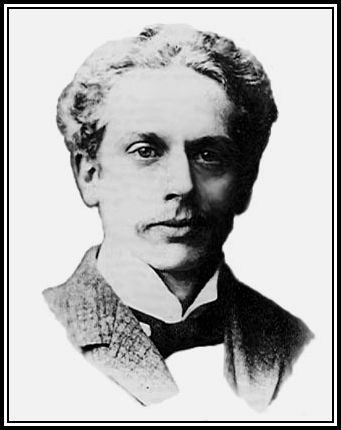 Robert Hope-Jones (1859-1914), Father of The Theatre Organ
Robert Hope-Jones (1859-1914), Father of The Theatre Organ
PART TWO: BUILDERS OF THE THEATRE ORGANS
THIS PAGE IS WRITTEN IN CONJUNCTION WITH GLEN TWAMLEY (FRIENDS OF BEER WURLITZER)
–oOo-
PAGE SIX: WURLITZER ORGANS IN FRANCE
While the Wurlitzer Theatre Organ proved to be very popular with cinema owners and the public in the U.S., the U.K., Australia, New Zealand and The Netherlands, it perhaps had a limited appeal in the rest of Europe.
In Paris, for example, only two Wurlitzer Theatre Organs were installed. Although, a number of cinemas in France haD theatre organs installed, many were manufactured by French companies (see further details, see the links at the end of this piece).
The two Wurlitzer Theatre Organs were installed at the Cinéma Madeleine in 1926 and at the Paramount Opera in 1927.
There was only one Christie Theatre Organ installed in France and this was at the Gaumont Palace at the Place Clichy in 1930. The organ was manufactured by William Hill & Son & Norman & Beard Ltd. (more commonly known as Hill, Norman and Beard) and had 4 manuals and 15 ranks.
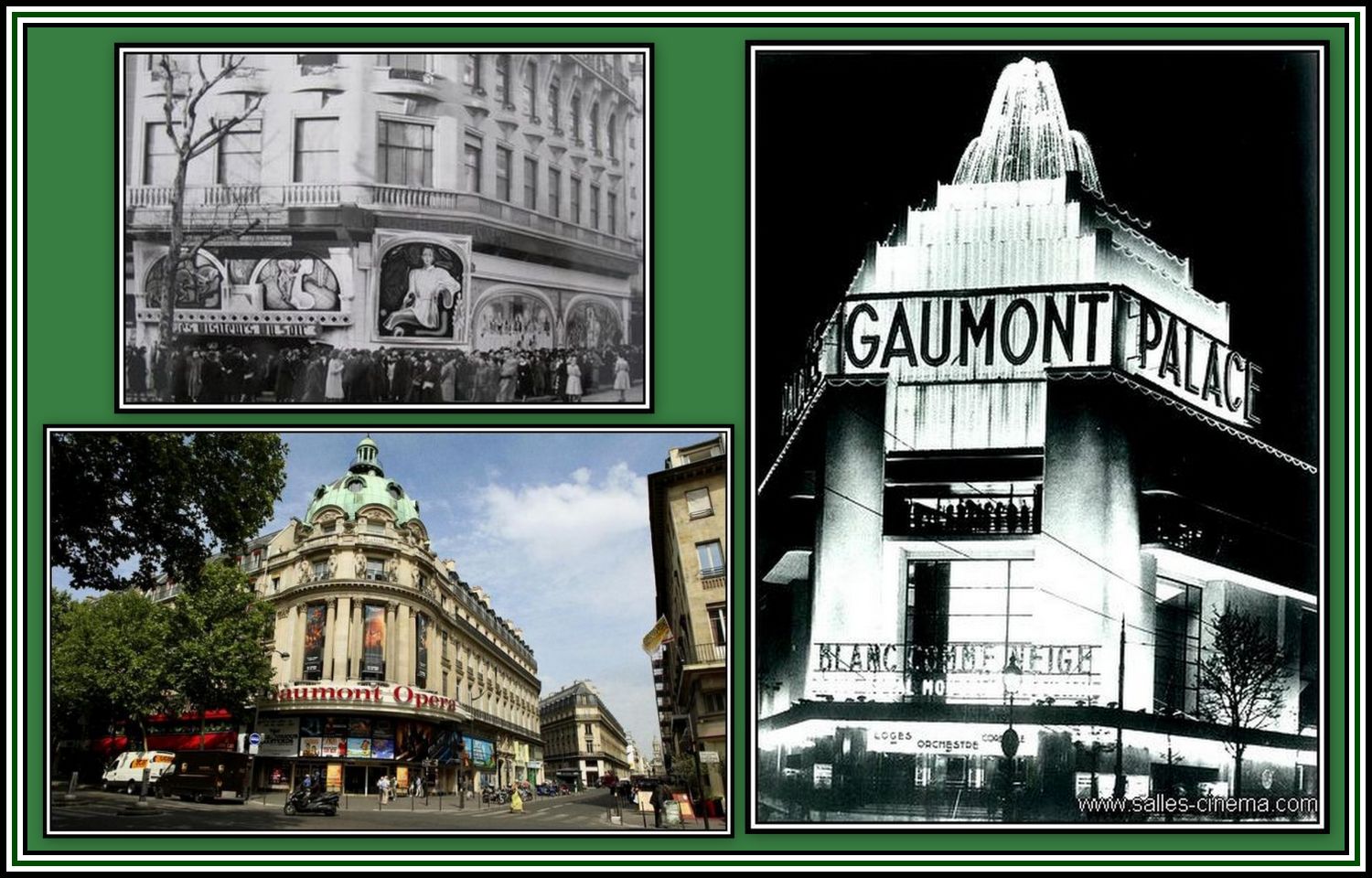 Top Left: Gaumont Madeleine; Bottom Left: Paramount Opera; Right: Gaumont Palace, Place Clichy These photographs appear at Salles-Cinema.com
Top Left: Gaumont Madeleine; Bottom Left: Paramount Opera; Right: Gaumont Palace, Place Clichy These photographs appear at Salles-Cinema.com
-oOo-
The Theatre Madeleine was designed by Marcel Oudin (1882-1936) and opened in 1918 and was considered to be one of the most luxurious cinemas in Paris. The cinema was built with seating in the stalls, balcony and slips. During his career, M. Oudin built a large number of other cinemas, including Le Mistral, one of the oldest cinemas in Paris, and the Music Hall, the Casino de Paris. In addition, he designed a number of hotels and department stores throughout France in either Art Deco or Art Decoratif style.
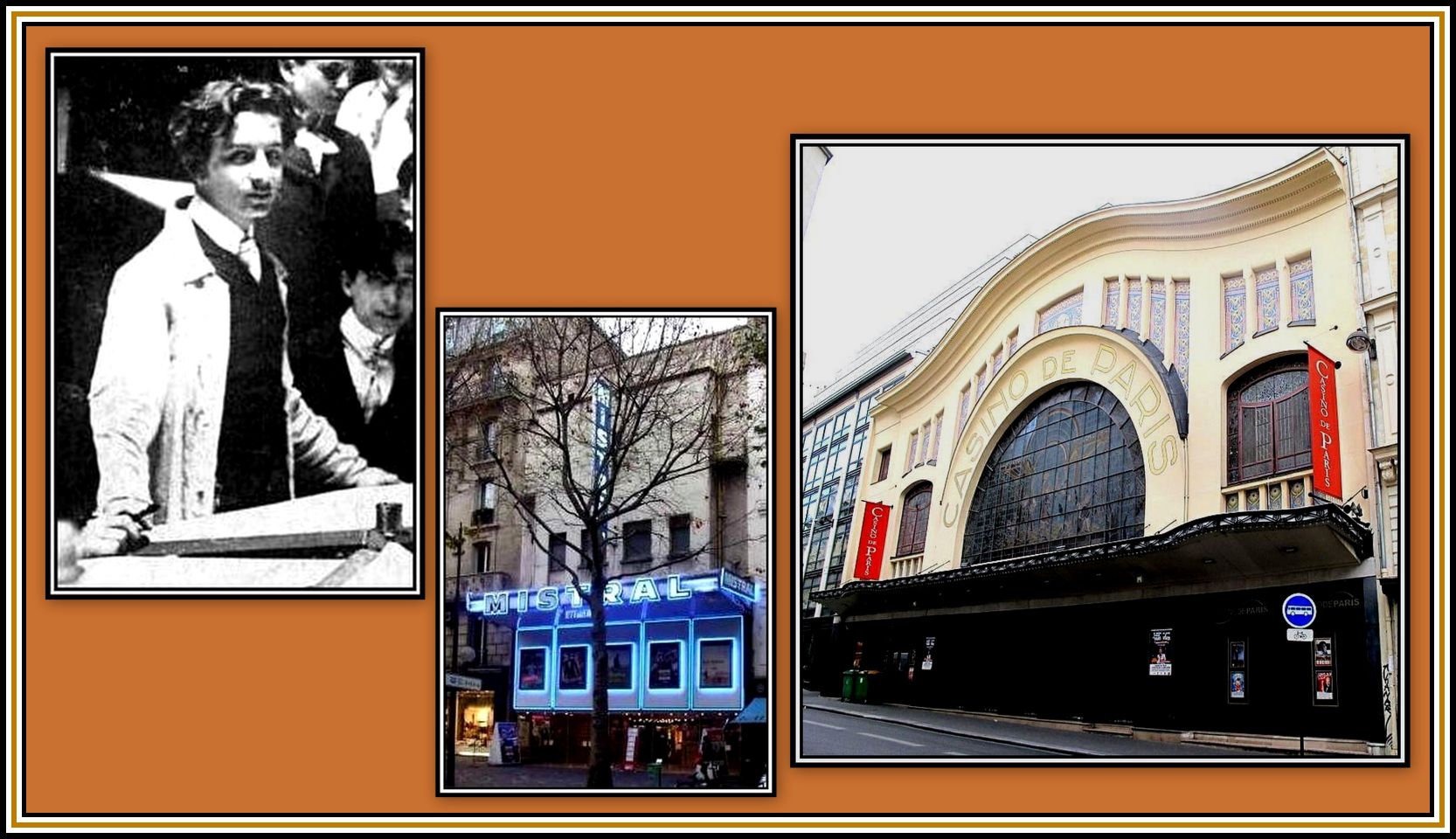 Left: Marcel Oulin, as a student in 1901; Middle: Le Mistral Cinema; Right: Casino de Paris
Left: Marcel Oulin, as a student in 1901; Middle: Le Mistral Cinema; Right: Casino de Paris
In 1925, the operation of the Theatre Madeleine was taken over by Loew’s Incorporated, the American cinema chain founded in 1904 by Marcus Loew and also the parent company of Metro-Goldwyn-Mayer Studios (1924-1959) at the time. I suspect that by now the Theatre had become known as the Cinema Madeleine.
In July 1926, Loew’s Incoporated had a Style-B Wurlitzer Organ (Opus 1354) with 2 manuals and 5 ranks shipped for installation in the cinema.
-oOo-
The Style-B Wurlitzer Theatre Organ was a four rank instrument (Flute, Vox Humana, Salicional and Trumpet). However many of these Style-B Theatre Organs were built as Specials. The Special designation usually implied that an additional rank (Tibia) had been added, thereby making them 5-rank instruments.
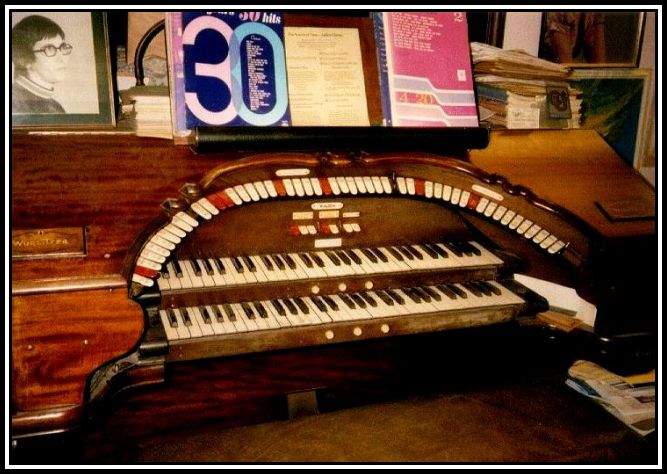 Style-B Special Wurlitzer Theatre Organ with 2-Manuals and 5 Ranks.
Style-B Special Wurlitzer Theatre Organ with 2-Manuals and 5 Ranks.
This photograph appears at the website of the Puget Sound Theatre Organ Society (PSTOS)
and appears with permission of Mr. Tom Blackwell.
The history of this console may be found at their PSTOS website.
The Wurlitzer Organ Company sold many of the Style-B models to smaller cinemas following its introduction towards the end of 1921. The model remained in production until 1927 when it was replaced by the Style-140 while the 5-rank Style B Special was replaced by the Style 150
Although the Wurlitzer Organ Company produced many unique theatre organs (i.e. Specials), the company did offer a number of standard models from their stock. The most popular of which were the Styles-B, D, E, and F, which proved to be the company’s biggest sellers. Between 1921 and 1928, approximately 672 of these models were produced, which represents 30% of the company’s total organ sales during The Cinema Organ Era.
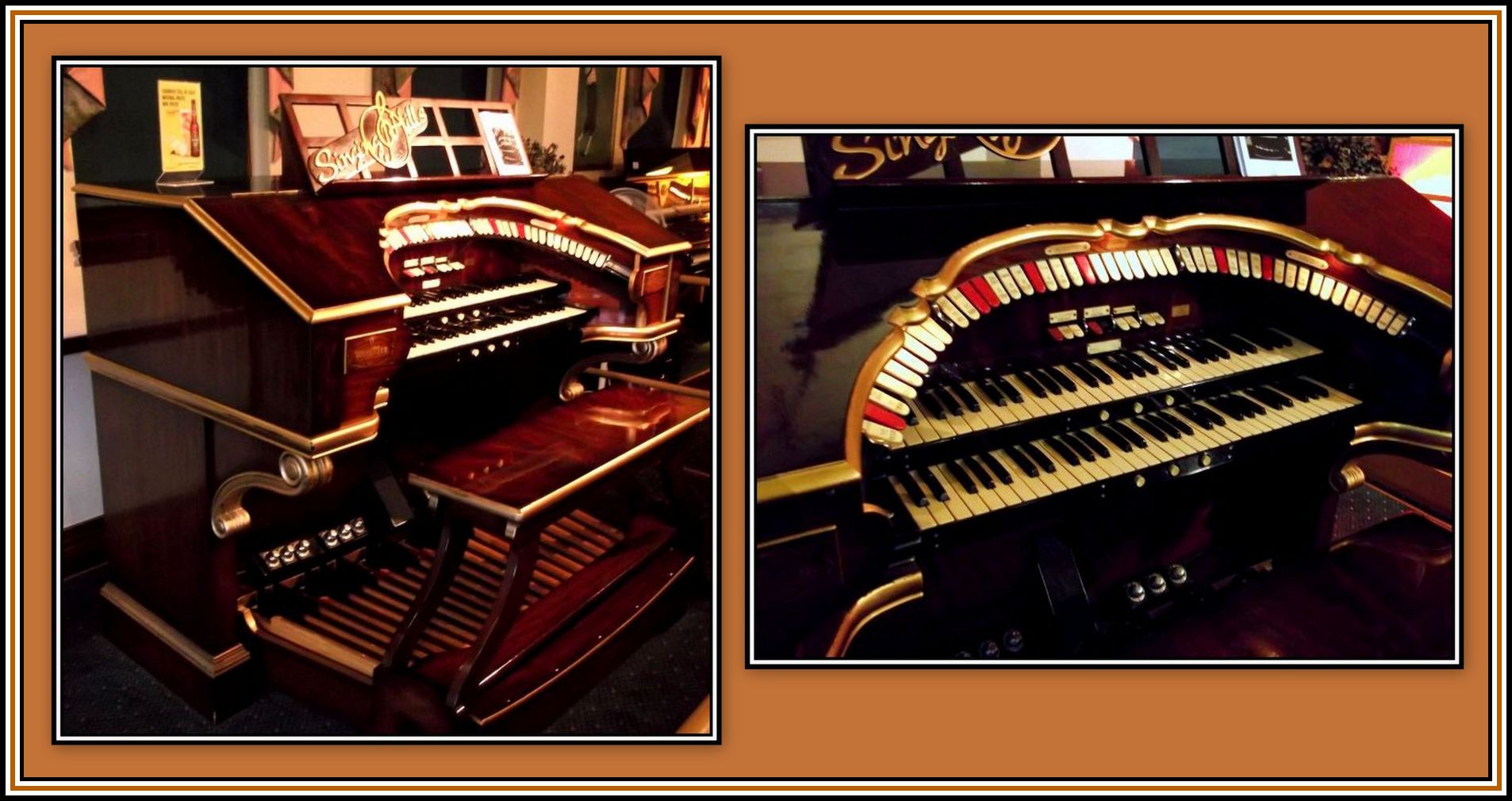 Style-B Special Wurlitzer Theatre Organ, Opus 1840, with 2-Manuals and 5 Ranks and was originally installed at the Regal Cinema Colchester. These photographs were taken and provided by Glen Twamley.
Style-B Special Wurlitzer Theatre Organ, Opus 1840, with 2-Manuals and 5 Ranks and was originally installed at the Regal Cinema Colchester. These photographs were taken and provided by Glen Twamley.
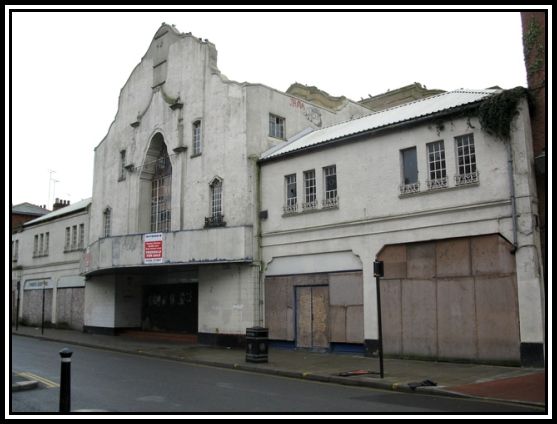 The erstwhile Regal Cinema Colchester – closed in 2002
The erstwhile Regal Cinema Colchester – closed in 2002
-oOo-
Unfortunately, the Cinema Madeleine experienced financial problems and the Wurlitzer Company repossessed the organ. The Wurlitzer Company rebuilt the organ and sold it in 1938 to the owners of the stately home, Stanford Hall, at Stanford-on-Soar, near Loughborough, Leicestershire. Here, concerts were given until about ten or so years ago when the building housing the organ was closed supposedly as a result of a health and safety issue. Apparently the organ is still in place although not been played for a number of years. I signed their petition started by the administration of the Hall, which they hope will eventually lead to the organ being restored and played once again at concerts.
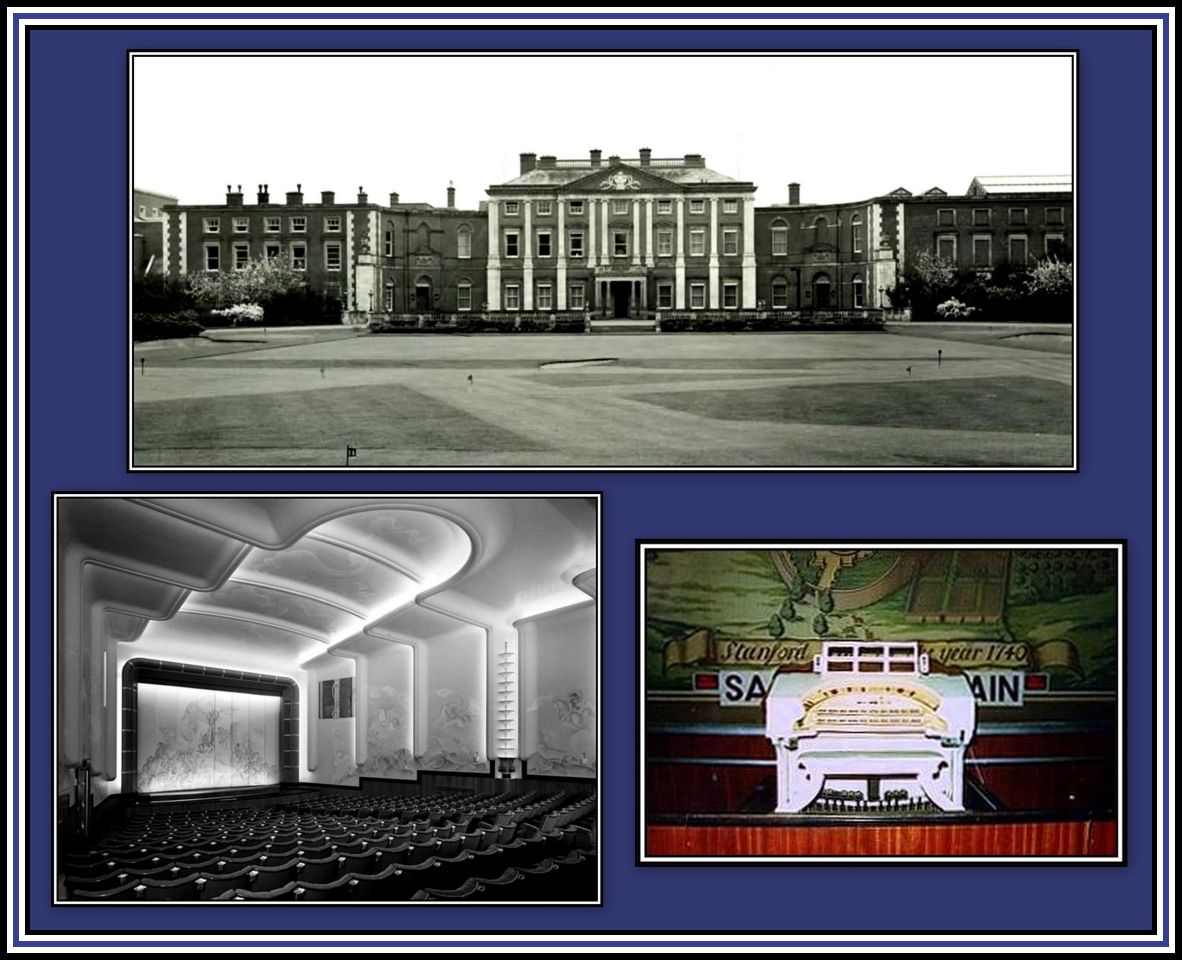 Stanford Hall & The Wurlitzer Organ
Stanford Hall & The Wurlitzer Organ
The Photographs of the Hall and of the Art Deco Theatre appear on the Official Website of Stanford Hall
Click here to hear Robinson Cleaver play this Theatre Organ at Stanford Hall
Click here to enjoy a tour of this Theatre Organ
-oOo-
The Cinema Madeleine eventually became part of Pathé-Gaumont, the French cinema circuit, and was re-named the Gaumont Madeleine at this time. The cinema was converted into two cinemas during the early 1970s and continued as such until the time of its closure with the subsequent conversion of the building for other use. If any reader is able to help with the date of closure, please contact me.
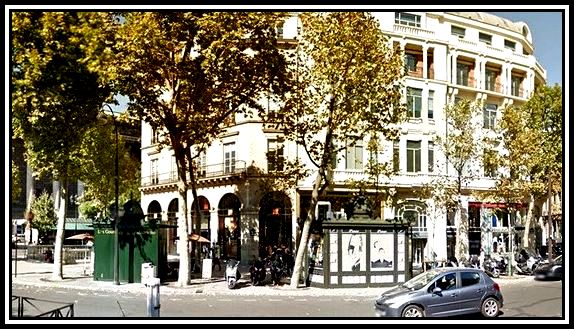 Boulevard de la Madeleine – site where the Gaumont Madeleine once stood
Boulevard de la Madeleine – site where the Gaumont Madeleine once stood
-oOo-
 The Erstwhile Paramount Theatre (now the Gaumont Opera Cinema)
The Erstwhile Paramount Theatre (now the Gaumont Opera Cinema)
The second Wurlitzer Theatre Organ to be sent to France was exported in May 1927 for installation at the Paramount Theatre on the Boulevard Des Capucines. The organ, Opus 1642, was a Style H instrument with 2-manuals and 10-ranks, but without a piano. Apparently the organ remained in place until ~1970, when it was removed and apparently broken up!
I am unsure if the two photographs that follow are indeed of the console of the Theatre Organ installed at the Paramount Theatre in Paris. According to Mr. Ian McIver, the organist shown in the following collage is Mr. Charles Smart who played there once Mr. Reginald Foort left.
What follows next is an definite example of a Style H instrument to allow the reader to see what such an organ would have looked like at installation at the Theatre:
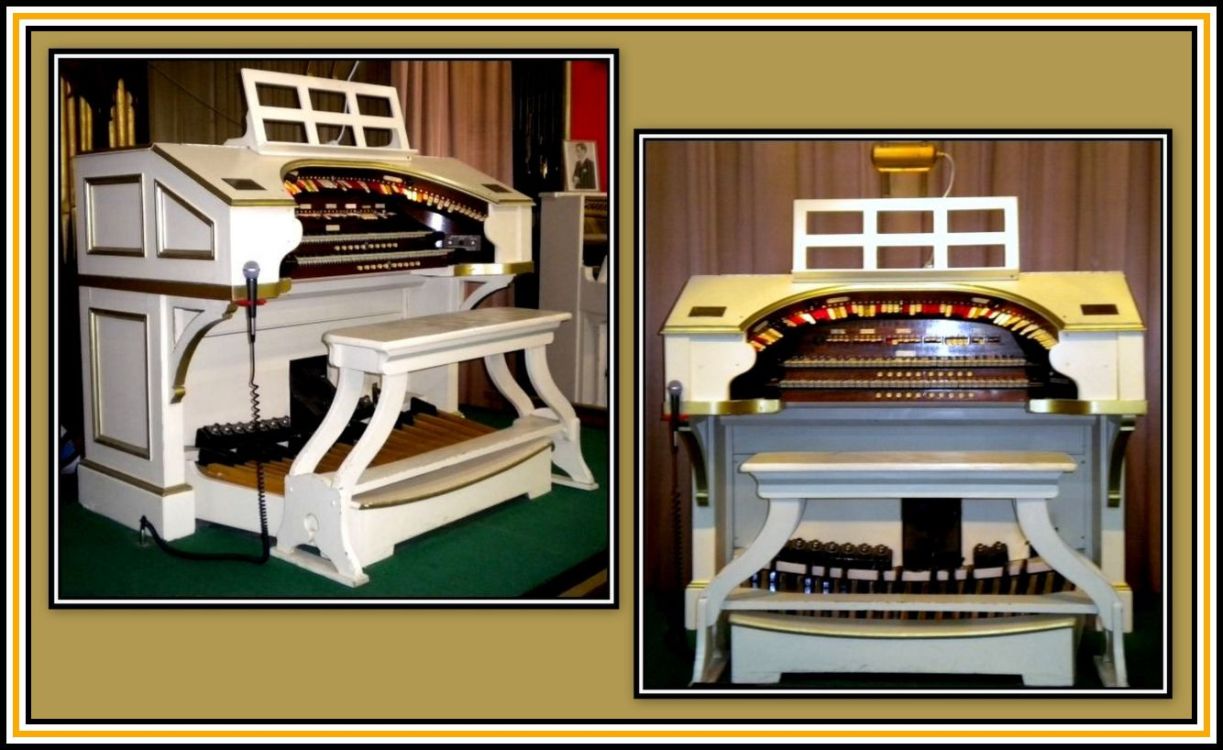 The Cotton Wurlitzer Organ Console – Style-H
The Cotton Wurlitzer Organ Console – Style-H
These photographs appear here by permission of Mr David Ivory
-oOo-
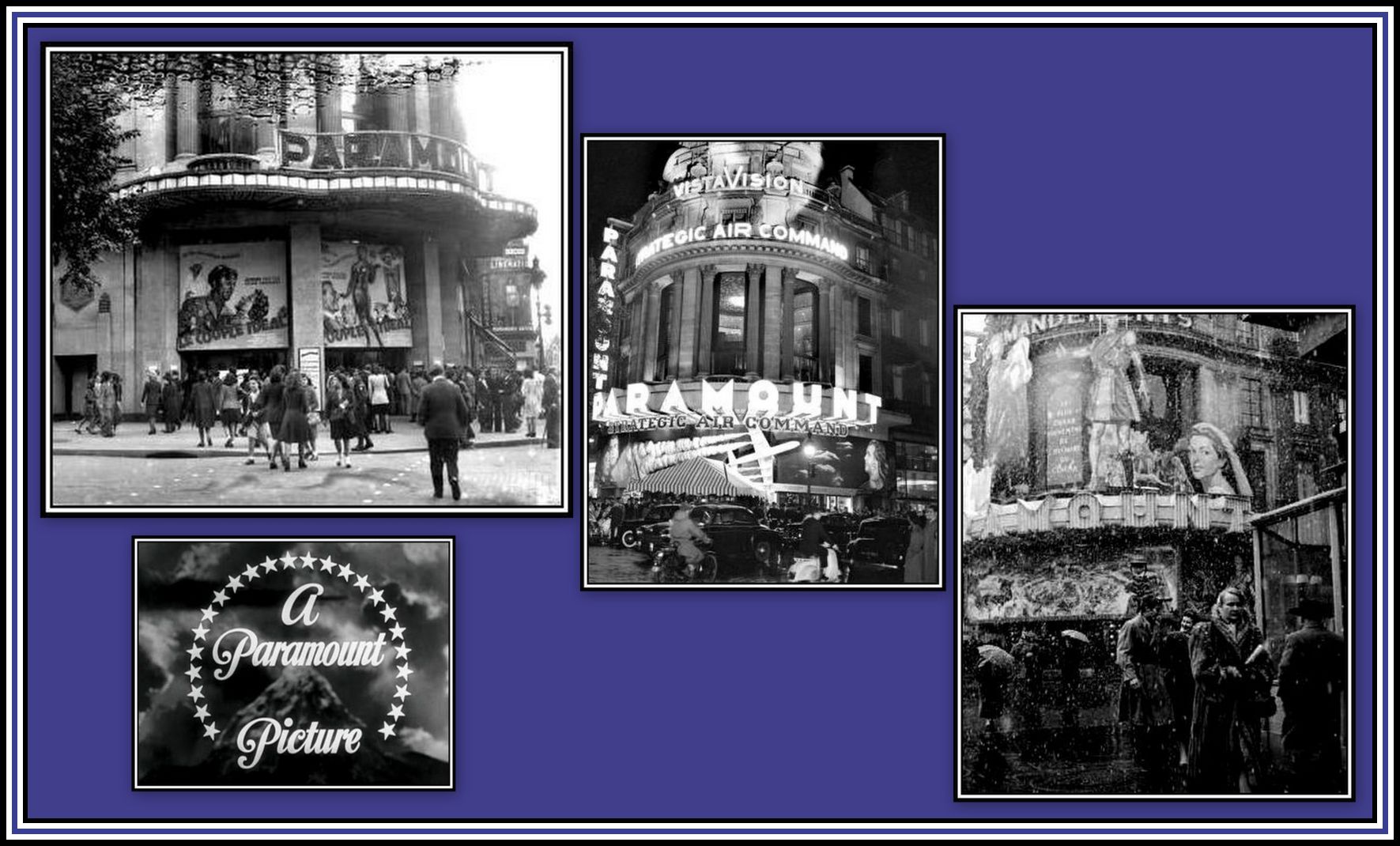 The Paramount Theatre during the 1950s; note the photograph on the right was taken in the snow
The Paramount Theatre during the 1950s; note the photograph on the right was taken in the snow
The Paramount Theatre was built on the site of the Théâtre du Vaudeville and opened in 1927. It was designed by the architect Frank T. Verity (1864-1937). In 1893, he rebuilt the foyer and facade of the Empire Theatre in Leicester Square. He later designed a number of other cinemas and theatres in London together with his partner, Sam Beverley. His designs may be seen in the Shepherds Bush Pavilion (opened in 1923), the Carlton Theatre in the Haymarket (opened in 1927 and now a cinema) and the Plaza Cinema in Lower Regent Street (opened in 1926).
 Left: Shepherds Bush Pavilion (Gaumont); Middle: Carlton Cinema; Right: Plaza Cinema
Left: Shepherds Bush Pavilion (Gaumont); Middle: Carlton Cinema; Right: Plaza Cinema
The Paramount Theatre in Paris offered seating for nearly two thousand patrons at the time of opening and continued as a single screen until the early 1970s when it was converted into a multi-screen cinema. Today, the cinema offers seven screens. According to one source, some vestiges of the original Art Deco features remain in place in the foyer of the upper floor of the cinema.
Since its construction, the cinema has had a variety of names, including the Paramount Theatre, the Gaumont Opera, the Paramount Opera, the Gaumont Opera Capucines, and as of 2009, it was renamed the Gaumont Opera.
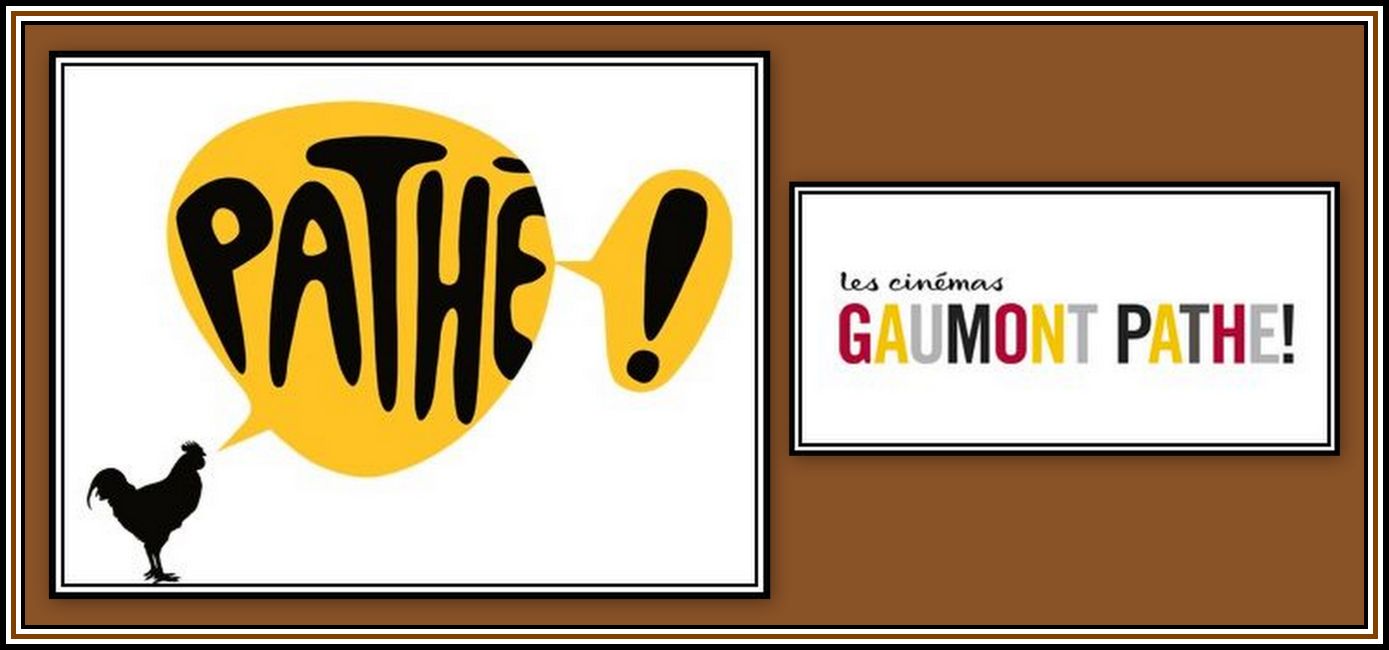 As of 2007, the cinema has been operated by Gaumont-Pathe.
As of 2007, the cinema has been operated by Gaumont-Pathe.
-oOo-
During the time I lived in Paris, I never went to this cinema. In addition to the screening of French films, the cinema occasionally showed those from elsewhere. However, these films were always dubbed into French.
-oOo-
In December 2014, I visited Paris and went to look at the Gaumont-Opera Cinema on the Boulevard Des Capucines in order to see what changes had been made to it.
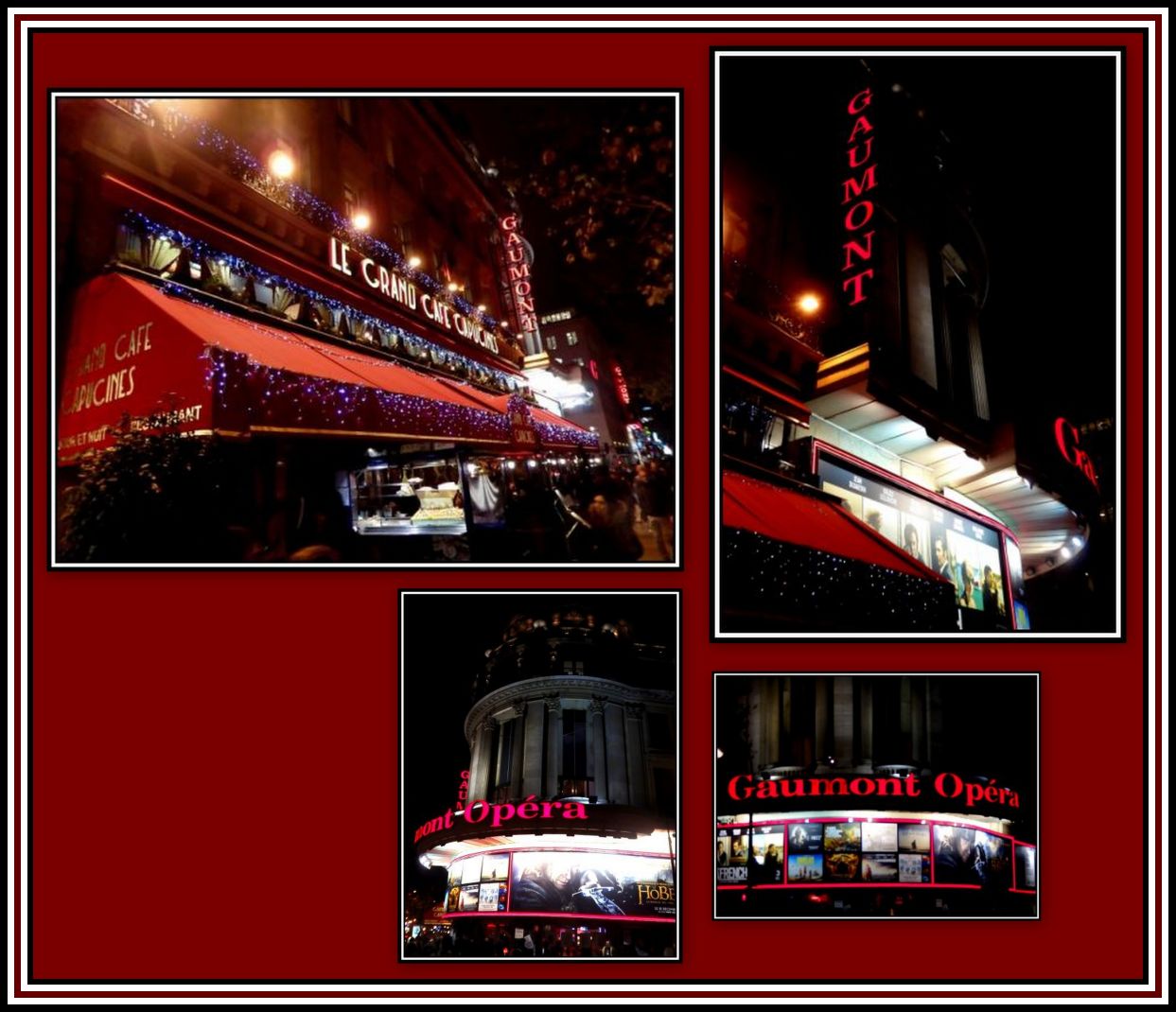 The Gaumont Opera Cinema, December 2014
The Gaumont Opera Cinema, December 2014
Firstly, I noticed that within walking distance of the cinema, there were now two other cinemas with the same name:
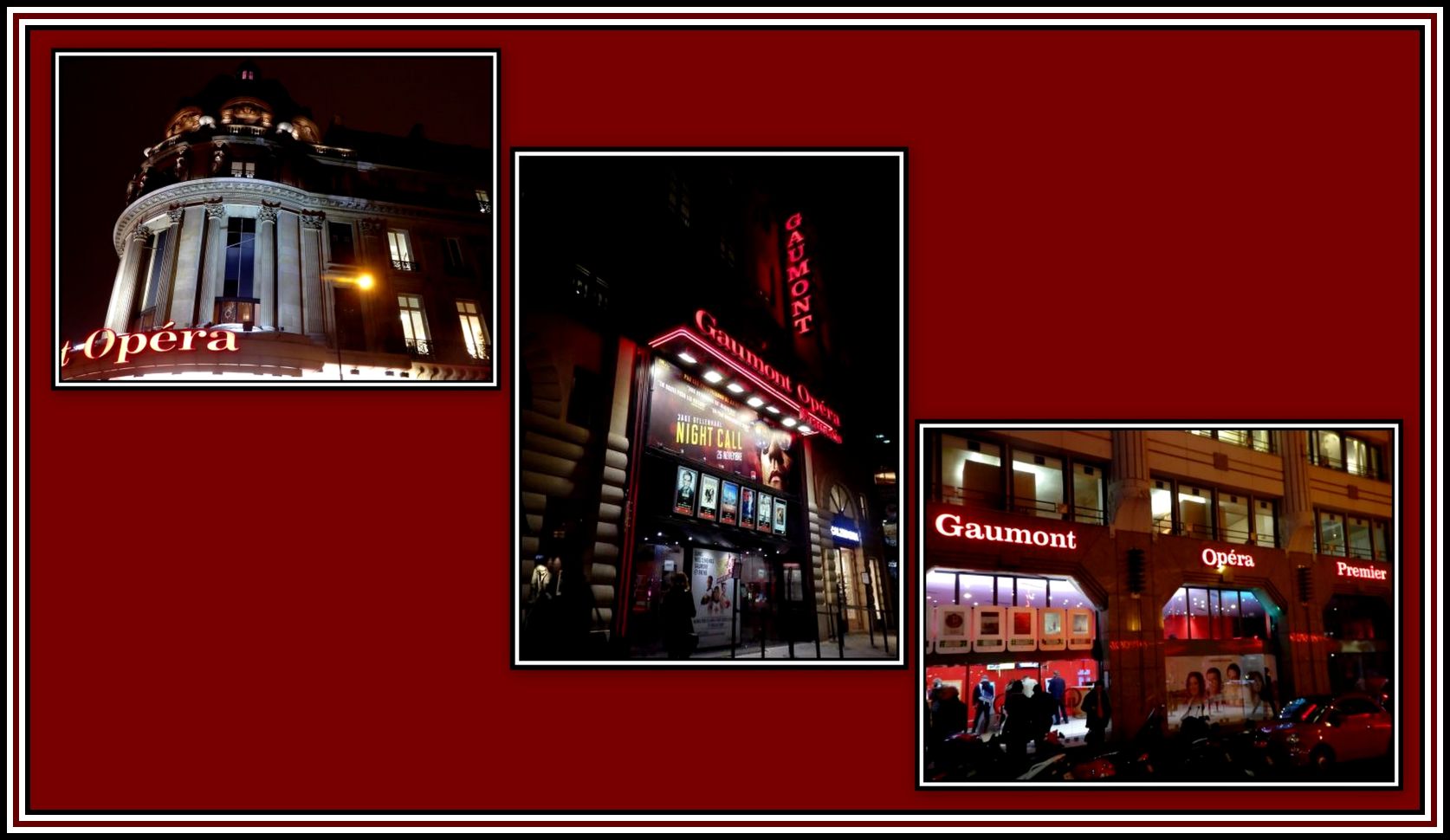 Right: Gaumont Opera (the erstwhile Paramount Theatre) at 2 Boulevard Des Capucines; Middle: Gaumont Opera (formerly The Francais Cinema, found just a few steps from the erstwhile Paramount Theatre, at 38 Boulevard Des Italians; and, across the Boulevard Des Capucines, at Rue Louis Le Grand, is the Gaumont Opera Premier.
Right: Gaumont Opera (the erstwhile Paramount Theatre) at 2 Boulevard Des Capucines; Middle: Gaumont Opera (formerly The Francais Cinema, found just a few steps from the erstwhile Paramount Theatre, at 38 Boulevard Des Italians; and, across the Boulevard Des Capucines, at Rue Louis Le Grand, is the Gaumont Opera Premier.
Although there are a grand total of EIGHTEEN SCREENS between these three cinemas, I was unable to find ONE film that interested me enough to allow me to purchase a ticket! Ça alors (i.e. Go figure)!
Secondly, after going into the foyer of the Gaumont Opera (i.e. the erstwhile Paramount Theatre) with the hope of finding some of its original decor, I am sorry to say that with the exception of some decoration of the rail leading up to the upper floor, I was unable to detect any. But this of course does not mean that there aren’t any. The foyer, with its machines to dispense tickets and area for the sale of sweets, drinks and popcorn, looks like so many multiplexes that now are found around the world.
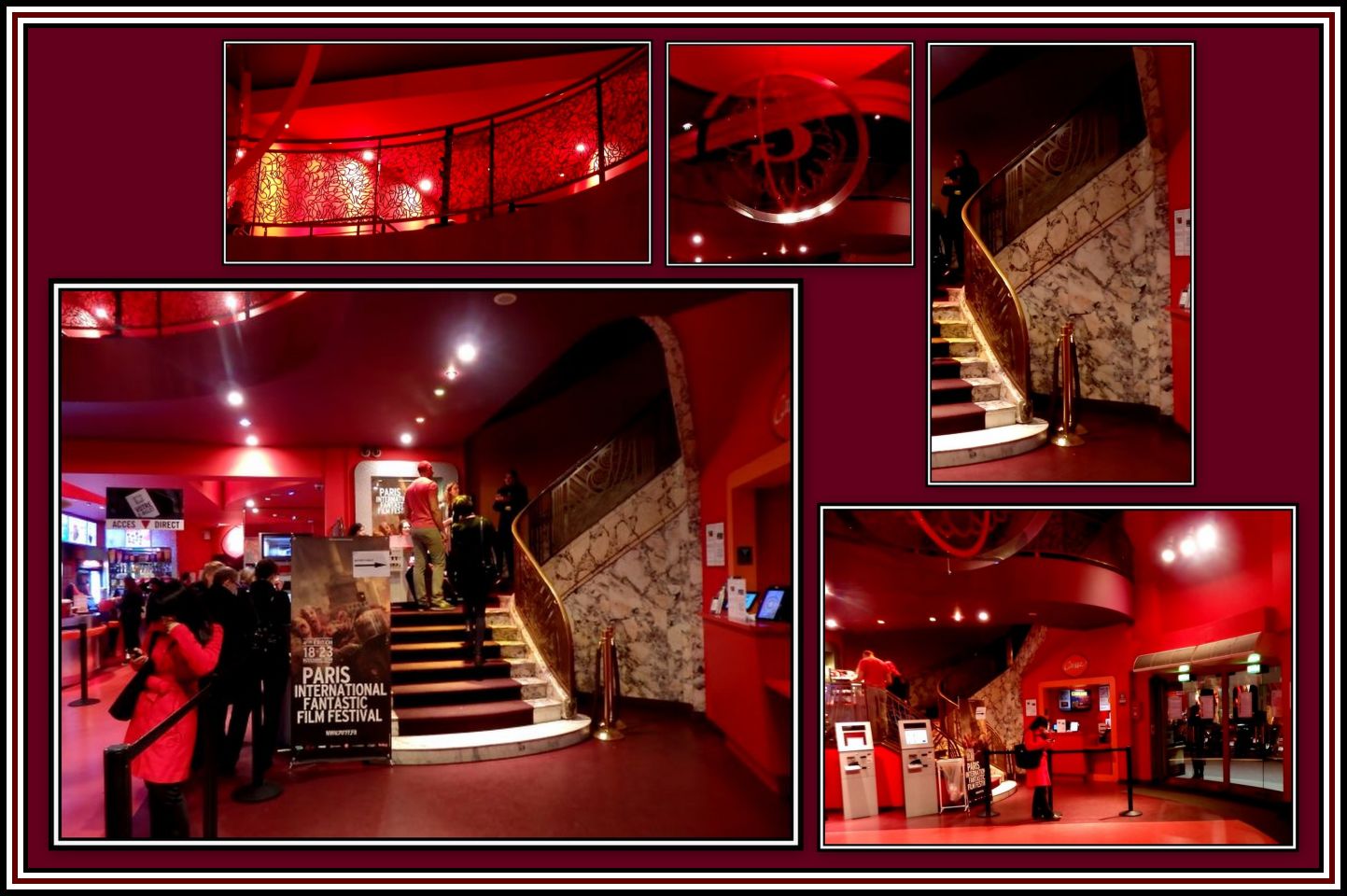 The Foyer of the Gaumont Opera (i.e. the erstwhile Paramount Theatre
The Foyer of the Gaumont Opera (i.e. the erstwhile Paramount Theatre
Top Row, from Left to Right: The rail of the Upper Floor; The Mobile hanging from the ceiling; and detail of the Rail of the Staircase leading to the Upper Floor. Bottom Row: Two views of the Foyer, showing the counter (Left) and Ticket Depsensers (Right)
-oOo-
To read about The Christie Theatre Organ once installed in the Gaumont Clichy Palace in Paris
Click here
-oOo-
ACKNOWLEDGEMENTS
I would like to thank those that helped to produce this page. I would like to offer special thanks to Mr. Tom Blackwell of the Puget Sound Theatre Organ Society (PSTOS) for allowing his photograph of the Style-B Special Wurlitzer Theatre Organ to appear here and Mr. Ian McIver of Theatre Organs Under the Southern Cross for his help.
——-oooOOOooo——-
——oooOOOooo——
Click here to return to PAGE FIVE of PART TWO:
WURLITZER ORGANS IN THE NETHERLANDS
–——oooOOOooo——
Click here to return to PART ONE:
INTRODUCTION
——oooOOOooo——
Click here to return to THE THEATRE ORGAN HOME PAGE
——oooOOOooo——
Click here to go to the TABLE OF CONTENTS
——oooOOOooo——

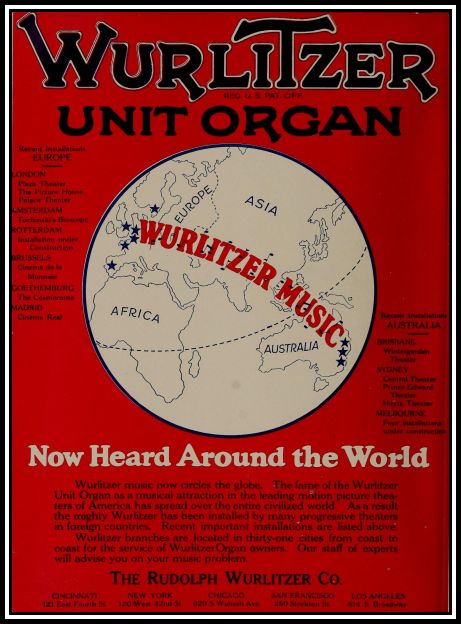
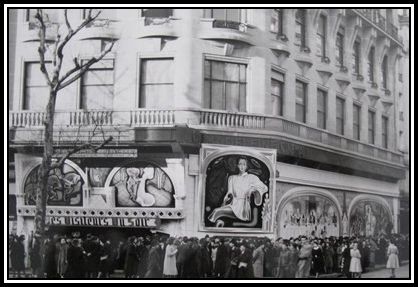
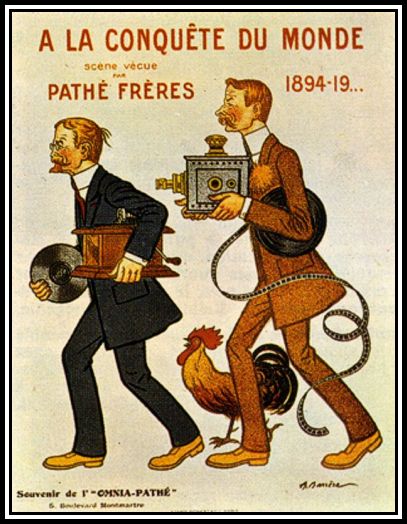
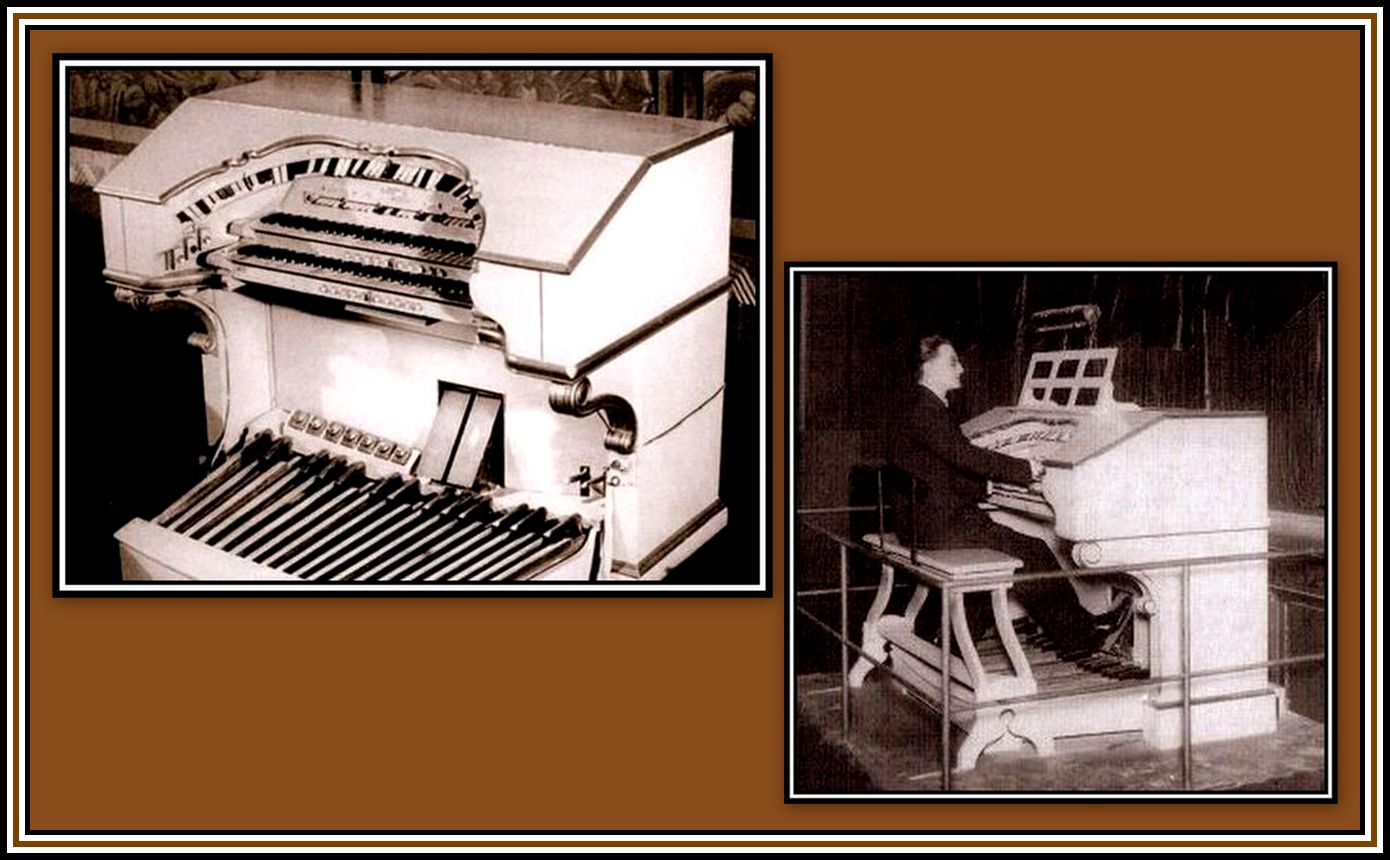
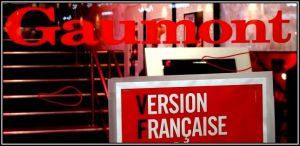
I had not read this section before and found it very interesting and entertaining. Les Francais were not, seemingly, overfond of the unit organ, but this piece provides a glimmer of light in that cultural darkness. Well up to your usual standards of scholarship, research and presentation.
I think the organist shown at the Paramount, Paris, is Charles Smart, who played there sometime after Foort left
Mr. McIver: Thank you very much for identifying the organist in the collage. I am very grateful. Charles S.P. Jenkins